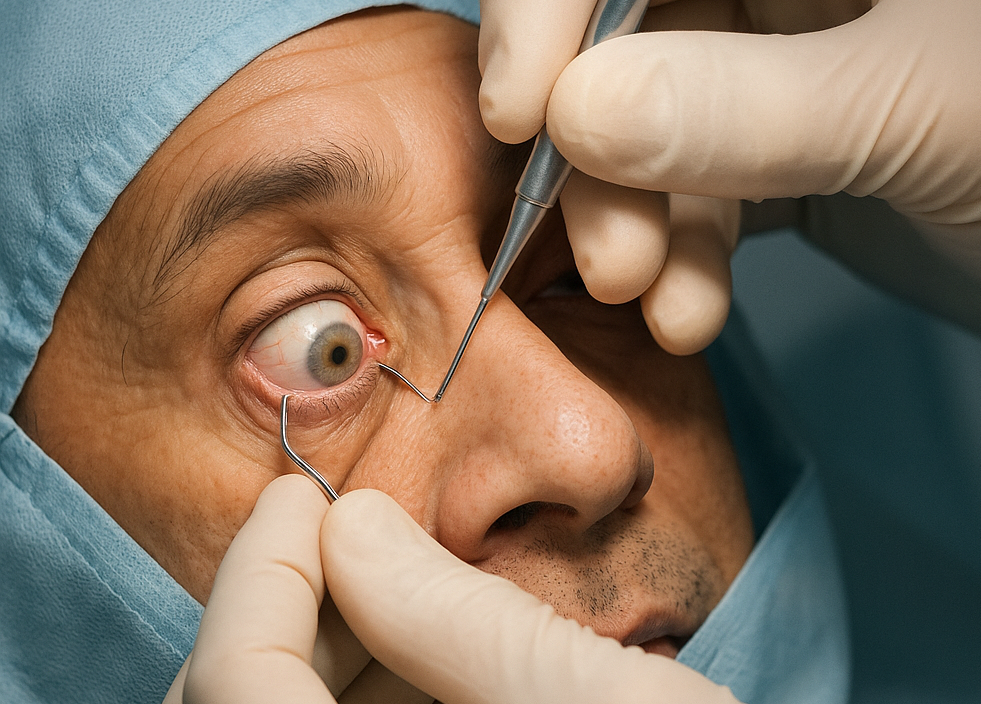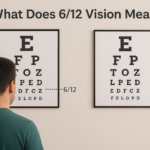Cataract surgery is a well-known procedure that significantly improves vision, but what if the patient also has a squint (strabismus)? This dual condition raises important concerns: Can cataract surgery still be performed safely? Will the presence of squint affect the outcome?
This guide addresses these questions and more — offering insights into the complexities of treating cataracts in patients with eye misalignment. With expert guidance from Dr. Ramesh Murthy at Axis Eye Clinic Kothrud, you’ll understand how modern ophthalmology makes it possible to treat both conditions effectively — sometimes even together.
Cataracts form when the eye’s natural lens becomes cloudy, resulting in blurry or distorted vision. This condition usually develops gradually with age but may also be caused by factors like diabetes, long-term sun exposure, or certain medications.
Squint, or strabismus, is a condition where the eyes do not align properly. One eye may turn in a different direction, affecting binocular vision and depth perception. It can be congenital or acquired due to muscle imbalance or nerve dysfunction.
While cataracts reduce visual clarity, squint impairs eye coordination. When both conditions coexist, careful diagnosis and treatment planning become essential.
Performing cataract surgery on someone with squint requires added precision and thoughtful surgical planning. Eye misalignment can interfere with critical pre-operative measurements like biometry and IOL power calculations.
Surgeons must also assess the impact of muscle imbalance and whether alignment correction is needed during or after cataract surgery. In some cases, both procedures can be done together — depending on the patient’s age, ocular structure, and visual goals.
Emotional support is also crucial. Squint patients may feel anxious about their appearance and vision post-surgery. Early discussions with the best eye specialist in Pune help manage expectations and build trust.
A detailed eye examination is necessary before proceeding with surgery. The ophthalmologist will evaluate cataract density, squint severity, ocular motility, and overall eye health. Some patients benefit from squint correction first, while others may undergo combined surgery.
Setting realistic expectations is vital. While cataract surgery can restore vision, separate treatment may be required to correct alignment or cosmetic concerns.
Consulting the best cataract surgeon in Pune ensures that all aspects — including timing, techniques, and follow-up — are addressed with precision.
Advanced diagnostic tools such as optical coherence tomography (OCT), eye tracking, and visual function testing help the surgeon map out a personalized surgical plan. In some cases, strabismus surgery is performed alongside cataract removal for improved results.
The use of premium intraocular lenses (IOLs) and microsurgical techniques ensures better clarity and reduced dependency on glasses. For such specialized cases, treatment at the best eye clinic in Pune ensures access to high-end technology and expert care.
If you’re looking for an eye clinic near me that handles complex dual conditions like cataract and squint, it’s important to choose one with a proven track record and multidisciplinary support.
Recovery involves careful post-operative monitoring. Patients may experience temporary discomfort, mild blurring, or sensitivity to light. Eye drops are prescribed to prevent infection and control inflammation.
It’s recommended to rest, avoid rubbing the eyes, and wear protective sunglasses when outdoors. Regular follow-ups with the best squint surgeon in Pune are important to monitor alignment and ensure proper healing.
Healing timelines vary, but with dedicated aftercare, most patients experience major improvements in both vision and eye coordination.
Yes — cataract surgery can be safely and successfully performed in patients with squint, especially when personalized care and expert planning are involved. Depending on the case, a combined or staged approach may be taken.
Under the skilled supervision of Dr. Ramesh Murthy, widely recognized as the best ophthalmologist in Kothrud, patients receive care that addresses both cataract and squint — using a methodical, patient-focused approach.
When supported by a team that includes the best eye specialist in Pune, the best cataract surgeon in Pune, and the best squint surgeon in Pune, patients can expect not just restored vision — but improved eye alignment, enhanced confidence, and lasting results — all delivered under one roof at the best eye clinic in Pune.
This guide addresses these questions and more — offering insights into the complexities of treating cataracts in patients with eye misalignment. With expert guidance from Dr. Ramesh Murthy at Axis Eye Clinic Kothrud, you’ll understand how modern ophthalmology makes it possible to treat both conditions effectively — sometimes even together.
Cataracts vs. Squint: Understanding the Difference
Cataracts form when the eye’s natural lens becomes cloudy, resulting in blurry or distorted vision. This condition usually develops gradually with age but may also be caused by factors like diabetes, long-term sun exposure, or certain medications.
Squint, or strabismus, is a condition where the eyes do not align properly. One eye may turn in a different direction, affecting binocular vision and depth perception. It can be congenital or acquired due to muscle imbalance or nerve dysfunction.
While cataracts reduce visual clarity, squint impairs eye coordination. When both conditions coexist, careful diagnosis and treatment planning become essential.
Unique Challenges of Cataract Surgery in Squint Patients
Performing cataract surgery on someone with squint requires added precision and thoughtful surgical planning. Eye misalignment can interfere with critical pre-operative measurements like biometry and IOL power calculations.
Surgeons must also assess the impact of muscle imbalance and whether alignment correction is needed during or after cataract surgery. In some cases, both procedures can be done together — depending on the patient’s age, ocular structure, and visual goals.
Emotional support is also crucial. Squint patients may feel anxious about their appearance and vision post-surgery. Early discussions with the best eye specialist in Pune help manage expectations and build trust.
Pre-Surgical Considerations
A detailed eye examination is necessary before proceeding with surgery. The ophthalmologist will evaluate cataract density, squint severity, ocular motility, and overall eye health. Some patients benefit from squint correction first, while others may undergo combined surgery.
Setting realistic expectations is vital. While cataract surgery can restore vision, separate treatment may be required to correct alignment or cosmetic concerns.
Consulting the best cataract surgeon in Pune ensures that all aspects — including timing, techniques, and follow-up — are addressed with precision.
Surgical Techniques for Optimal Results
Advanced diagnostic tools such as optical coherence tomography (OCT), eye tracking, and visual function testing help the surgeon map out a personalized surgical plan. In some cases, strabismus surgery is performed alongside cataract removal for improved results.
The use of premium intraocular lenses (IOLs) and microsurgical techniques ensures better clarity and reduced dependency on glasses. For such specialized cases, treatment at the best eye clinic in Pune ensures access to high-end technology and expert care.
If you’re looking for an eye clinic near me that handles complex dual conditions like cataract and squint, it’s important to choose one with a proven track record and multidisciplinary support.
Post-Surgical Recovery and Care
Recovery involves careful post-operative monitoring. Patients may experience temporary discomfort, mild blurring, or sensitivity to light. Eye drops are prescribed to prevent infection and control inflammation.
It’s recommended to rest, avoid rubbing the eyes, and wear protective sunglasses when outdoors. Regular follow-ups with the best squint surgeon in Pune are important to monitor alignment and ensure proper healing.
Healing timelines vary, but with dedicated aftercare, most patients experience major improvements in both vision and eye coordination.
Is It Safe and Effective?
Yes — cataract surgery can be safely and successfully performed in patients with squint, especially when personalized care and expert planning are involved. Depending on the case, a combined or staged approach may be taken.
Under the skilled supervision of Dr. Ramesh Murthy, widely recognized as the best ophthalmologist in Kothrud, patients receive care that addresses both cataract and squint — using a methodical, patient-focused approach.
When supported by a team that includes the best eye specialist in Pune, the best cataract surgeon in Pune, and the best squint surgeon in Pune, patients can expect not just restored vision — but improved eye alignment, enhanced confidence, and lasting results — all delivered under one roof at the best eye clinic in Pune.






